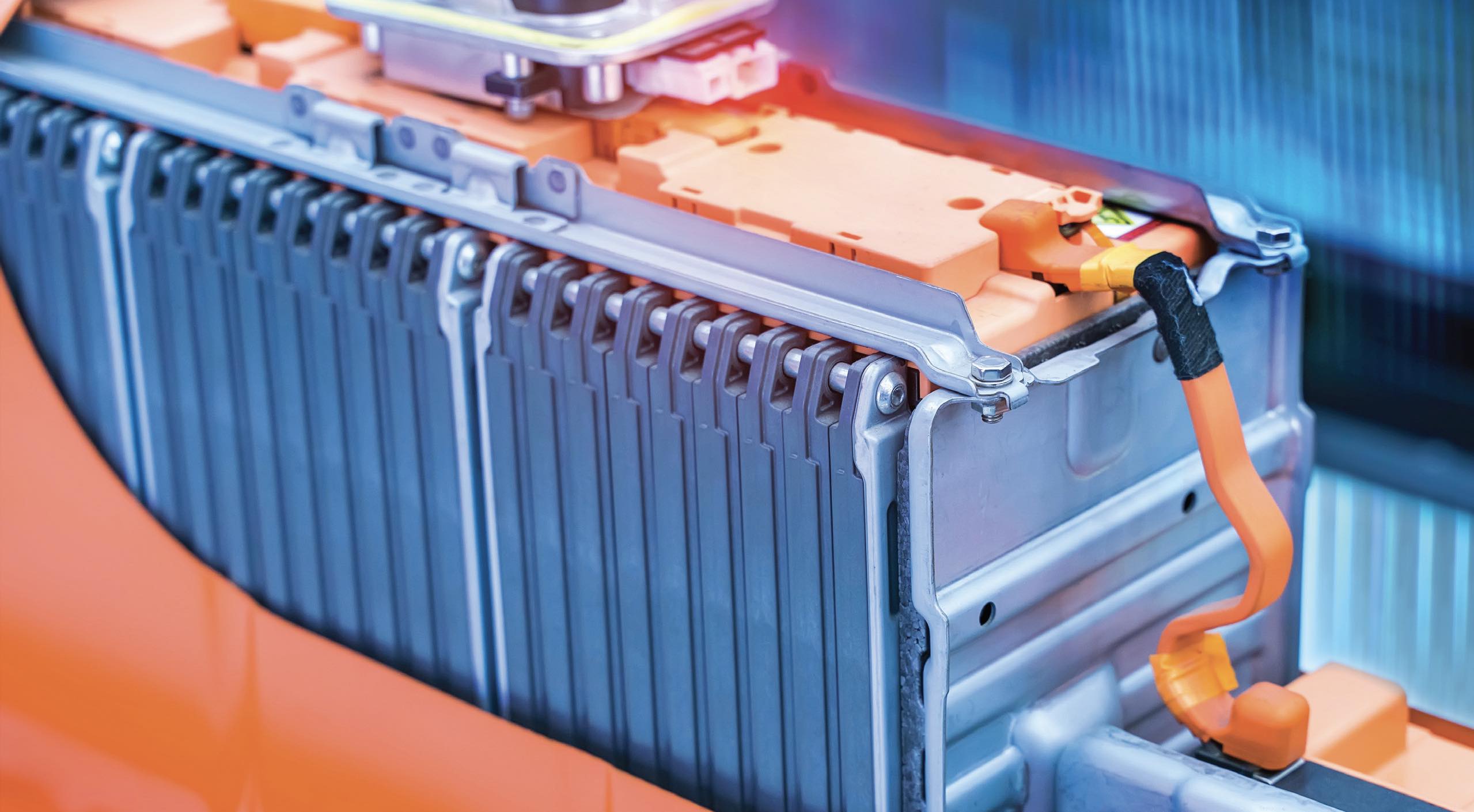New electric vehicle battery technology
By Don Smolenski, Contributing Editor | TLT Machinery April 2024
There are improvements in lithium-ion battery safety and efficiency.

The rapid increase in the sales of electric vehicles (EVs) highlights areas of desired improvement in EV batteries. Some work at Oak Ridge National Laboratory (ORNL) investigated mechanical influences, such as stress and strain, that could affect battery efficiency and longevity.
1 A team-developed framework enabled the understanding of mechanical (as opposed to chemical or electrical) effects in the design of solid-state batteries (SSBs). Several different functional areas, including computation, chemistry, materials science and others, worked together to develop a comprehensive understanding. In batteries charged particles flow through an electrolyte. The electrolyte is most likely a liquid, but solid electrolytes, typically made from ceramic or glass, also are being developed. Such SSBs won’t have flammable liquids, so should be inherently safer. However, SSB components may shrink or swell during use, causing delamination and voids. Today’s systems use high pressure to “keep things together.” Solid electrolytes are in relatively early stages of development, though, and will require electrolytes that maintain stable interfaces without fracturing. In the 1990s ORNL developed a glassy electrode called LiPON, which has high ductility and was used in thin film batteries. This recent work will help understand factors that shape SSB lifespan and efficacy.
Some recent work at the Ulsan National Institute of Science and Technology (UNIST), Korea, investigated gel polymer electrolytes (GPE).
2 A team at UNIST developed a non-flammable GPE. Potential flammability of lithium-ion batteries has raised concerns, especially of EV fires in garages, in particular. Some non-flammable electrolytes use flame retardants or solvents with very high boiling points. Although these do address the flammability issue, they often decrease ion conductivity, detrimentally affecting battery efficiency. Using a trace amount of the polymer in the electrolyte resulted in a semi-solid, which exhibited a 33% improvement in lithium-ion conduction compared to other typical liquid electrolytes. Also important, this GPE prevented undesirable electrolyte reactions during the formation of the solid-electrolyte interphase layer by stabilizing and suppressing radicals, effectively reducing the risk of fire. This reduction in radicals also allowed for 110% improvement in life characteristics. This suppression of radicals was electrochemically quantified, providing additional understanding of its mechanism.
A third project looked at improving battery energy density by creating a higher percentage of active components (e.g., thicker and denser electrodes), while simultaneously reducing the percentage of passive components (packaging, current collector, etc.).
3
All of these projects are still in relatively early phases of development. In addition to potentially being developed and commercialized, they also add to critical understanding of battery function.
REFERENCES
1.
Oak Ridge National Laboratory (December 2023), “Designing solid-state batteries with mechanics in mind,”
Batteries & Electrification Technology, p 23.
2.
Ulsan National Institute of Science and Technology, Korea (December 2023), “New gel polymer electrolyte to revolutionize the safety of Li-ion batteries,”
Batteries & Electrification Technology, p. 24.
3.
“Improving battery performance with more efficient electrolytes,” (December 2023),
Batteries & Electrification Technology, p. 21.
Don Smolenski is president of his own consultancy, Strategic Management of Oil, LLC, in St. Clair Shores, Mich. You can reach him at donald.smolenski@gmail.com.